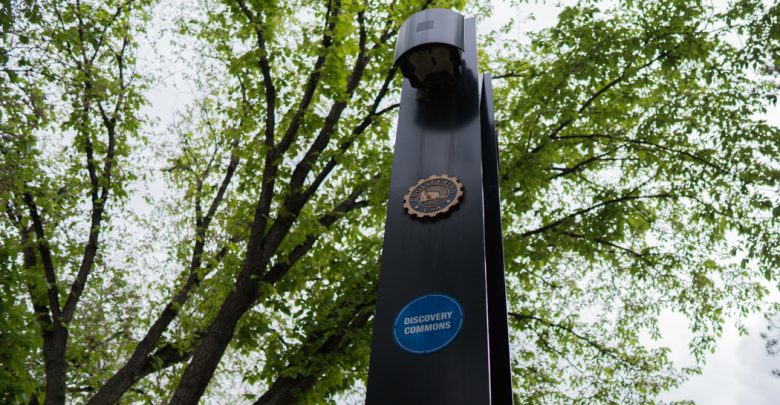 Richard Bagan
Richard BaganProfessor Tony Qiu’s team from the department of civil and environmental engineering recently received $500,000 from the federal government to continue their research on automated vehicles.
The funding was announced on June 25 and will last until 2020. The $500,000 will be used to fund two projects: the development of secure and private networks for automated vehicles, and the development of smart infrastructure capable of communicating with automated vehicles.
The first project will test networks to allow vehicles to wirelessly communicate with one another in a secure manner to avoid hacking, while the second project will focus on developing and testing infrastructure such as smart traffic lights and intersections that can recognize and communicate with smart vehicles.
Developing smart infrastructure is of particular interest to the group since little research currently goes into creating infrastructure able to deal with constantly evolving smart vehicles.
“We all talk about electric vehicles and automated vehicles, but while vehicle technology changes quickly, infrastructure technology changes more slowly,” Qiu said.
The announcement was recently made by the Transport Minister Marc Garneau and Infrastructure Minister Amarjeet Sohi. Qiu’s team, along with their collaborators, will work closely with the government to develop this technology.
“The government wants to know how in the future we can make our roadways smart and how we can make them compatible with evolving vehicle technology, including smart and driverless cars,” Qiu said.
The funding will also support the Centre for Smart Transportation, which Qiu leads. One of the main efforts of the centre is Active-Aurora, a project that started in 2016 with over $3 million in funding from several sources, including the Universities of Alberta and British Columbia, the Government of Alberta, and the City of Edmonton.
Active-Aurora established Canada’s first connected vehicle test site, and since 2017, has been testing several technologies in Edmonton and Vancouver. Phase one of the project included three sites in Edmonton: 23 Avenue, Whitemud Drive, and Anthony Henday Drive.
These sites tested connected vehicle networks, where regular vehicles carrying a wireless mobile device could gather and transmit real-time information to traffic lights and other vehicles to receive pedestrian alerts and notifications of high collision areas, amongst other things.
The new funding will also test a novel technology: connecting emergency vehicles to smart infrastructure to save lives. Qiu’s team is hoping to have fire engines communicate with approaching traffic lights to send a message to turn lights green, helping the emergency vehicle get through traffic in a safer and faster manner.
“This is something we’re still developing, and we’ll begin testing it with fire engines… but the same principle can be applied to other vehicle types, [such as ambulances],” Qiu said.
Additionally, Edmontonians will be able to use an automated shuttle in a pilot study in partnership with the City of Edmonton starting this October.
While Qiu thinks having completely automated personal vehicles on roads is still many years away, he believes real-world applications can be implemented in as soon as two years.
“Within two years we should see some real-life applications in closed, controlled environments such as resorts, malls or airports,” he said.




